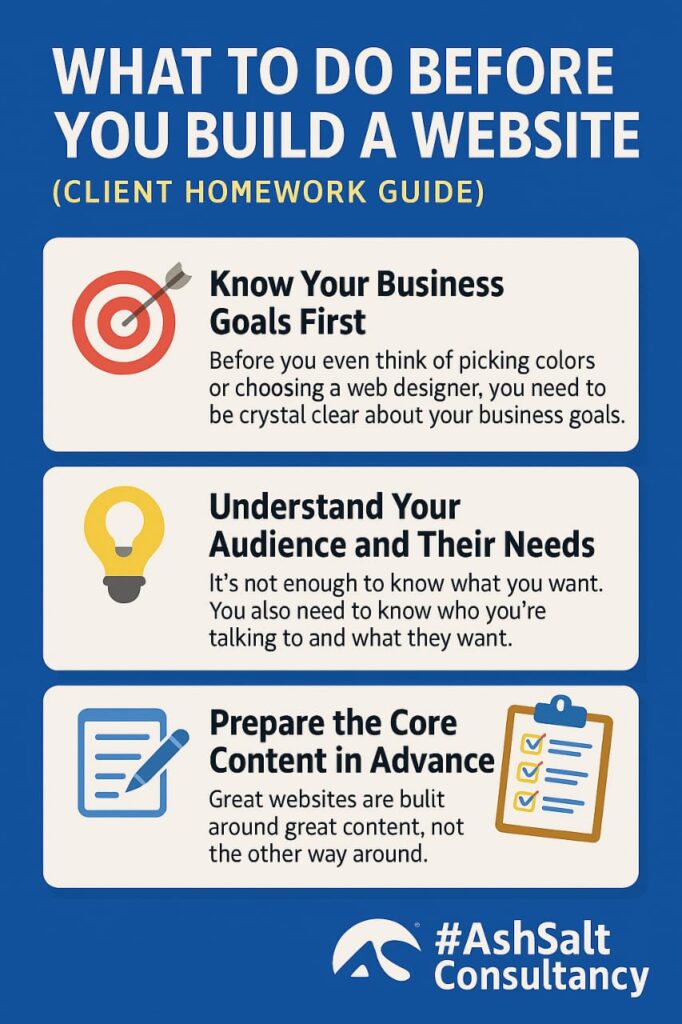1. Know Your Business Goals First
Before you even think of picking colors or choosing a web designer, you need to be crystal clear about your business goals. Are you trying to get more clients? Sell products? Build your brand’s reputation? Your website should be built around those goals — not just what looks good. When your goals are clear, everything else becomes easier. You’ll know what pages you need, what features to include, and even how to measure success.
At AshSalt Consultancy, we always ask our clients to start with this question: What do you want this website to do for your business? The answers help guide the design, the copy, and even the backend structure. Your website is not just a digital brochure — it’s a tool for conversion, credibility, and connection.
2. Understand Your Audience and Their Needs
It’s not enough to know what you want. You also need to know who you’re talking to and what they want. Who is your ideal customer? What are they searching for online? What kind of tone or language do they connect with? Understanding your audience allows you to create a user experience that speaks directly to them.
Create simple audience personas with basic information: name, age, interests, pain points, and buying behavior. This helps in writing your website copy, choosing visuals, and even planning your call-to-actions. Remember: a beautiful site that doesn’t speak to your audience won’t get results.
3. Prepare the Core Content in Advance
Most people wait till the website is halfway done before they start thinking about content. Don’t do that. Great websites are built around great content, not the other way around. You’ll need a clear homepage message, an About section, service descriptions, and calls-to-action that move visitors toward your goal. And if you plan to show up in Google search results? You’ll need SEO-optimized content too.
At AshSalt, we advise clients to gather the following before web design starts:
- A short business description
- A mission or brand story
- Clear descriptions of your services/products
- Testimonials or social proof (if available)
- Any photos, logos, or brand files
This is your homework — and when you do it early, the website process is faster, smoother, and more effective.
Set Yourself Up for a Website That Works
A successful website starts before a single line of code is written. When you lay the right foundation — with clear goals, audience insights, and strong content — your website becomes more than a design. It becomes a strategic business tool that builds trust, attracts the right people, and drives real results. So before you hand off the project to a designer or developer, take the time to do your homework. Your future self will thank you.



